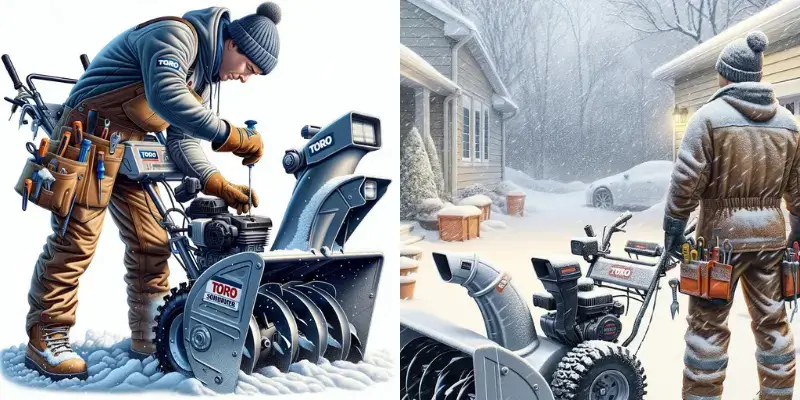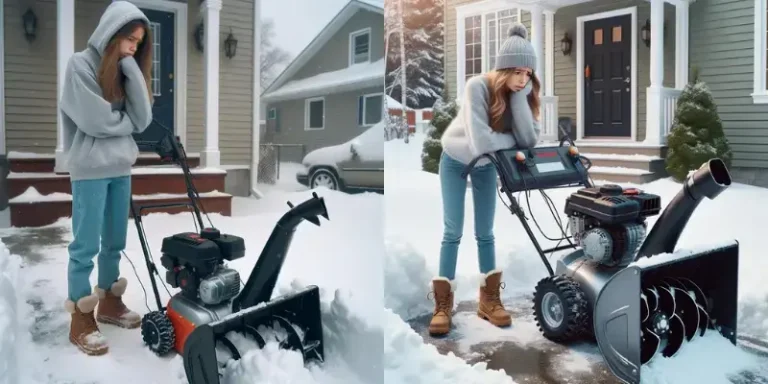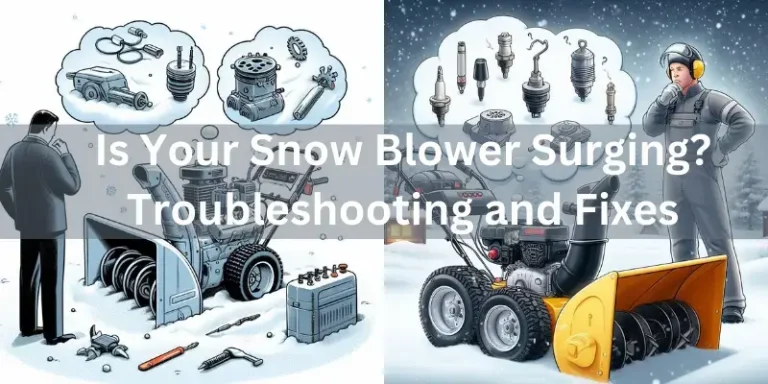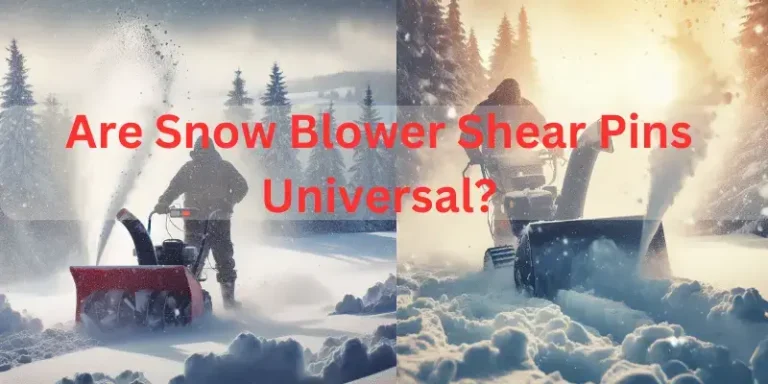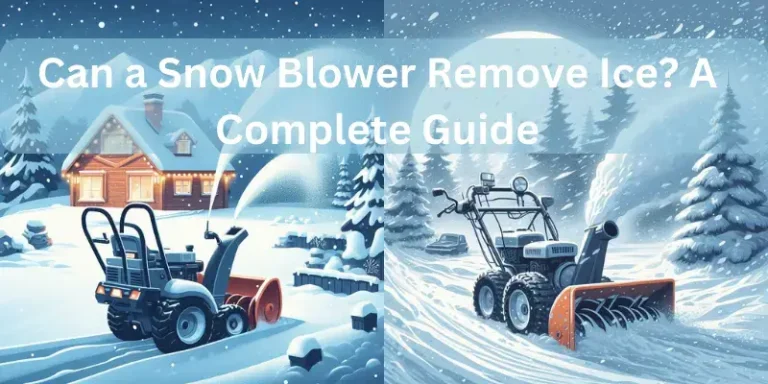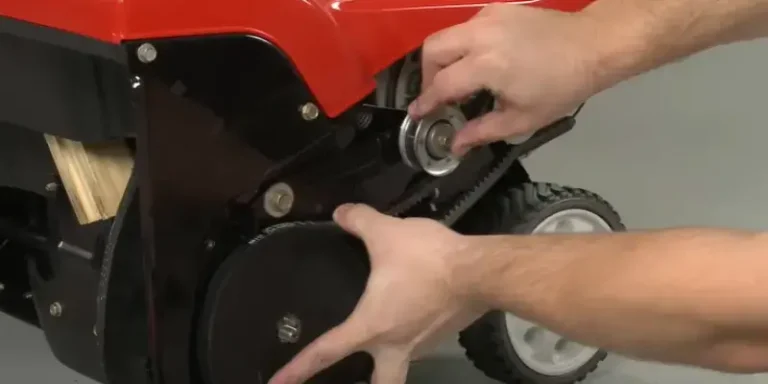How to Start a Toro Snowblower in 5 Easy Steps & (What If It Doesn’t Start?)
Struggling with a blanket of snow on your driveway? Have you ever thought about how a snowblower could turn this chilly chore into a breeze?
Snow can be pretty, but let’s be honest, shoveling it? Not so much. That’s where a Toro snowblower comes into play. Not only does it save your back from the heavy lifting, but it also cuts down the time you spend in the cold.
In this post, I am going to walk through the easy process of starting your Toro snowblower. Plus, I have got some handy tips in case it becomes stubborn and does not start.
Starting a Toro Snow Blower
Step 1: Utilizing the Ignition Key
Modern Toro snowblowers are equipped with an ignition key, an important element for initiating the machine. To start, carefully insert the ignition key into the designated slot. This action is integral to enabling the starting mechanism of the snowblower.
Following this, connect the power cord. It is imperative to choose a power cord of appropriate length to ensure mobility and safety while clearing snow. This cord provides the electrical power necessary for the snowblower’s operation, particularly if you are using an electric start model.

Step 2: Priming the Engine
The next step involves priming the engine, which is particularly vital in cold weather conditions. Locate the primer bulb on your snowblower. This bulb, when pressed, injects a small amount of fuel directly into the carburetor, facilitating the start-up of the engine in a cold state.
Gently press the primer bulb three times. However, it is vital to avoid over-priming as this can lead to engine flooding, where excess fuel can hinder the engine’s ability to start.

Step 3: Adjusting Choke and Throttle
The choke and throttle are instrumental in managing the starting and running of the engine. For initiating a cold start, set the choke lever to the full position and the throttle to a high or fast setting.
The choke reduces the air intake, enriching the fuel mixture and making it easier for the engine to start in cold conditions. Once the engine starts, the choke should be gradually opened (or turned off) to allow a normal air-fuel mixture for efficient engine operation.

Step 4: Starting the Engine
You now have two options to start the engine: manually pulling the starter cord or pressing the electric starter button, if your model is equipped with this feature. When using the pull start, apply a firm and smooth pull on the cord.
For the electric start, simply press the starter button. Both methods are effective, but it is essential to execute the chosen method with a consistent and steady action to successfully start the engine.

Step 5: Warming Up the Engine
After starting the snowblower, it is important to allow the engine to warm up, especially in cold temperatures. Initially, keep the choke in the on position to aid in warming up. As the engine warms, gradually shift the choke to the off position.
Concurrently, adjust the throttle to a setting that matches your snow-clearing needs. It’s also important to periodically check for any blockages in critical areas, such as the auger and the chute, to ensure the snowblower operates efficiently and safely.
By following these steps carefully, you can efficiently start and operate your Toro snowblower, making snow clearing a more manageable task.
What If My Toro Snowblower Doesn’t Start?
When your Toro snowblower doesn’t start, it’s important to methodically troubleshoot the issue. Here’s a detailed approach to identifying and resolving common problems:
Check the Basics
Fuel:
Verify that the fuel in the snowblower is fresh. Gasoline can degrade over time, leading to starting difficulties. If the fuel is old (more than 30 days without a stabilizer), drain it and refill it with fresh fuel.
Spark Plug:
Inspect the spark plug. A dirty or improperly connected spark plug can prevent the engine from starting. Remove the spark plug and check for deposits, wear, or damage. Clean it if dirty, and ensure it’s properly gapped and securely connected. Replace the spark plug if it appears damaged or excessively worn.
Power Source:
For models with an electric starter, ensure that the power outlet is functioning and that the power cord is in good condition. Check for any damage to the cord and ensure it’s securely plugged into both the snowblower and the power outlet.
Auger and Chute:
Inspect the auger and chute for any obstructions. Ice, snow, or debris trapped in these areas can jam the mechanism, preventing the snowblower from starting. Clear any blockages carefully, ensuring the snowblower is off and the key is removed before doing so.
Check Settings
Choke and Throttle:
Double-check the settings of the choke and throttle. For a cold start, the choke should typically be set to the full position, and the throttle should be set to a higher speed. Incorrect settings can hinder the starting process.
When to Seek Help
If you’ve systematically checked and addressed these aspects and the snowblower still fails to start, it’s advisable to refer to the user manual for specific troubleshooting related to your model. The manual may provide additional insights or steps unique to your snowblower.
If the problem persists despite following these steps and consulting the manual, it might be time to seek professional assistance. A certified technician can diagnose and fix issues that are beyond basic troubleshooting, such as internal engine problems or electrical faults.
By following these steps, you should be able to identify and resolve common issues that prevent a Toro snowblower from starting. Regular maintenance and proper storage practices can also help minimize start-up issues.
Maintaining Your Toro Snowblower
Maintaining your snowblower is mandatory for ensuring its long life and optimal performance, especially during the demanding winter months. Detailed maintenance checklist to keep your snowblower running smoothly:
Regular Oil Checks and Changes
Regularly check the oil level in your snowblower to ensure it is within the recommended range. Use the dipstick to monitor the oil level and inspect the oil’s color and consistency.
Change the oil according to the manufacturer’s recommended schedule, typically found in the user manual. This is usually advised after a certain number of operating hours or at least once per season. Fresh oil is vital for the efficient running of the engine and to prevent internal damage.
Spark Plug Inspection and Maintenance
Periodically inspect the spark plug for signs of wear and tear. Look for discoloration, deposits, or damage to the electrode.
Clean the spark plug regularly to remove any buildup of deposits. Use a spark plug cleaning tool or a wire brush for this purpose.
Check the gap between the electrodes with a feeler gauge and adjust it if necessary, according to the specifications in your snowblower’s manual.
Replace the spark plug if it’s worn out, damaged, or as part of your regular maintenance schedule (usually once a season).
Belt Inspection and Tension Adjustment
Check the condition of the belts on your snowblower. Look for signs of wear, such as cracks, fraying, or thinning.
Ensure that the belts are properly tensioned. Loose belts can slip, reducing the efficiency of your snowblower, while overly tight belts can cause excessive wear or damage.
Refer to your snowblower’s manual for the correct tension settings and instructions on how to adjust the belt tension.
Replace any belts that are damaged or have become excessively worn to maintain optimal performance.
In addition to these specific checks, it’s also important to keep your snowblower clean, lubricate moving parts regularly, and store it in a dry, protected space when not in use. Keeping up with regular maintenance can greatly reduce the likelihood of start-up issues and prolong the life of your snowblower.
Conclusion:
In summary, I’ve outlined the essential steps for starting and troubleshooting a Toro snowblower, emphasizing the importance of regular maintenance. This guide covers everything from correctly using the ignition key, priming the engine, and adjusting the choke and throttle, to choosing the right starting method and ensuring a proper warm-up routine.
Additionally, it highlights how checking the basics like fuel, spark plug, and power source, as well as clearing the path and properly setting the machine, can prevent and solve common start-up issues.
I encourage sharing your unique experiences or success stories, as they could be immensely helpful to others facing similar challenges in their snow-clearing endeavors.
External Resources
Toro’s Official Website: Toro’s official website offers a wealth of resources, including user manuals, FAQs, and maintenance guides for Toro snowblowers
Snowblower Forum Discussions:
Check out SnowBlowerForum.com for discussions and advice from snowblower enthusiasts.
Home Improvement Websites:
Visit The Home Depot, and Lowe’s, like forums, and use their search functions to find snowblower maintenance and troubleshooting articles.

About Naveed A Hashmi
In my childhood, I used to see my parents while working in the land, for these reasons today I have been serving the same as our own tradition and culture. I thus love to stay in it, because I want to learn something advanced and new so that I may improve my farm’s contour and help others with my experience.

